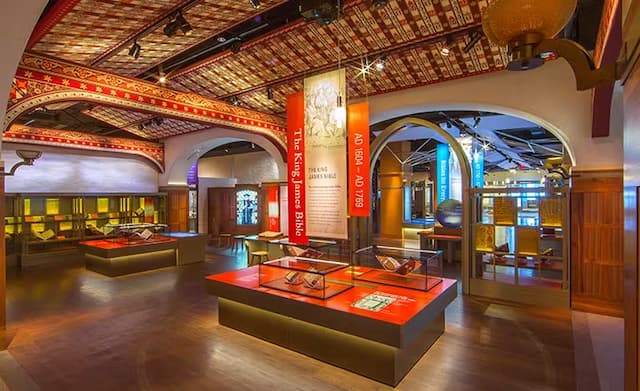Water Systems in the Ancient Near East – Part 1
At the time when Canaan was experiencing famine, Isaac came to Gerar to live in the city instead of going to Egypt as his father Abraham had done (Gen. 26:1-34). Famine occurred in Canaan during periods of drought, as had happened in the days of Abraham (Gen. 12:10) and Jacob (Gen. 42:5). The lack of rainfall created difficult conditions for the people and their crops, and liveflock.
Life in the Desert
Isaac lived as a seminomad who owned sheep and goats and moved throughout the land in search of better pasture for his flock. Seminomads were dependent on pasture to feed their flocks. Since the flocks needed water, city dwellers perceived nomads as threats to the resources available to them. During times of drought, seminomadic people moved from place to place, as Isaac did, to find water for their flocks. Drought caused disputes between the inhabitants of the cities and seminomads over water rights because the cities also had meadowlands and flocks that needed water.
In Gerar, Isaac planted crops and had an abundant harvest. Because of God’s blessing, he became rich and had a large flock and many servants. The Philistines became hostile towards Isaac and expelled him from their city. Banished from a fertile land, Isaac had to dig wells to provide water for his family and flock.
Gerar was a town in the Negev, a desert region in the southern part of Canaan. Gerar was halfway between Beersheba and Gaza. Although the annual rainfall in the Negev is insufficient to sustain much agriculture, it rains enough to allow people to maintain small flocks and to provide cultivation of basic crop plants.
The arid areas of Canaan created a challenge to human settlement and to economic development. The crucial challenge people faced was the imbalance between the demand for water and its availability, since water supply was too scarce to meet the demand of settled communities. The arid zones of Canaan generally experienced occasional dry spells, and lack of rain extended into long-term droughts (Job 12:15). During these droughts people suffered, the crop failed, and flocks perish (Jer. 14:1-3; Hag. 1:11).
Because of the harsh climatic nature of arid regions, the need for water is most intense just when water availability by natural precipitation is lacking. This imbalance between water supply and water demand was counterbalanced by the development of other means of providing water, such as wells, cisterns, pools, and water tunnels.
Notwithstanding the harsh conditions of the land, people lived in arid regions such as the Negev and many other areas in Canaan. To subsist in desert lands, people must find ways of obtaining additional supplies of water, either by finding underground sources or by collecting water running from the slopes or house tops during short periods of rainfall.
Over the centuries people settled into the arid and semiarid areas of the Ancient Near East and were able to adapt to the harsh conditions of their environment by increasing their water storage and supply. The great civilizations of Mesopotamia and the inhabitants of Canaan and Egypt were able to develop ways of bringing water into their cities. Once water became available beyond the level of subsistence, people built great cities, thus proving that people can build settlements even in areas with extreme dry conditions. In antiquity, the viability of cities depended on their proximity to water sources. [1]
Water in the Ancient Near East
In Egypt, the main source of water was the Nile River. The Nile formed by the merging of the White Nile and the Blue Nile and flowed 1,675 miles after the merger north to the Mediterranean Sea. The Nile River was considered to be the source of life in ancient Egypt. The waters of the Nile allowed the shores of the river to be easily cultivated (Deut. 11:10). The annual flood of the Nile, which occurred between July and November, brought a rich silt called “the black soil” that was deposited on the fields and fertilized the land. Egyptians called this area the Black Land to distinguish it from the Read Land of the desert. Small channels brought the water of the Nile to individual farms and fields. The silt the Nile deposited allowed the Egyptians to irrigate the soil and raise different kinds of crops in quantity, including grain (Gen. 42:1-2) and vegetables such as cucumbers, melons, leeks, onions, and garlic (Num. 11:5). The Nile turned Egypt into a fertile land where people of other cultures could come to buy grain. [2]
On the other side of the Ancient Near East, the Tigris and the Euphrates Rivers provided much of the water that aided the development of the ancient Mesopotamian cultures. The word Mesopotamia means the land “between the rivers.” This section of the Ancient Near East is also known as the Fertile Crescent because of its abundant natural resources and the fertile farmland that made possible an increase in food supply and the growth of cities and villages. The area around the Tigris and the Euphrates was the birthplace of the ancient civilizations of the Sumerians, Akkadians, Assyrians, and the Babylonians. The Tigris and the Euphrates became the main sources of water for the cities and villages. The rivers’ waters, carried by canals, irrigated agricultural fields in the alluvial lands between the rivers.
Endnotes
[1] Keith Schoville, Biblical Archaeology in Focus (Grand Rapids: Baker Book House, 1982), p. 188.
[2] Henry J. Flanders, Jr, Robert W. Crapps, and David A. Smith, People of the Covenant (New York: Oxford University Press, 1996), p. 54.
Note: This is the first part of an article published under the title “. . . and Not a Drop to Drink: Water’s Effect on Civilization Development,” published in the Biblical Illustrator 34 (Winter 2007-08), 10-15. The article is published here with the permission of the publisher.
NEXT: Water Systems in the Ancient Near East – Part 2
Claude Mariottini
Emeritus Professor of Old Testament
Northern Baptist Seminary
NOTE: Did you like this post? Do you think other people would like to read this post? Be sure to share this post on Facebook and share a link on Twitter or Tumblr so that others may enjoy reading it too!
I would love to hear from you! Let me know what you thought of this post by leaving a comment below. Be sure to like my page on Facebook, follow me on Twitter, follow me on Tumblr, Facebook, and subscribe to my blog to receive each post by email.
If you are looking for other series of studies on the Old Testament, visit the Archive section and you will find many studies that deal with a variety of topics.




